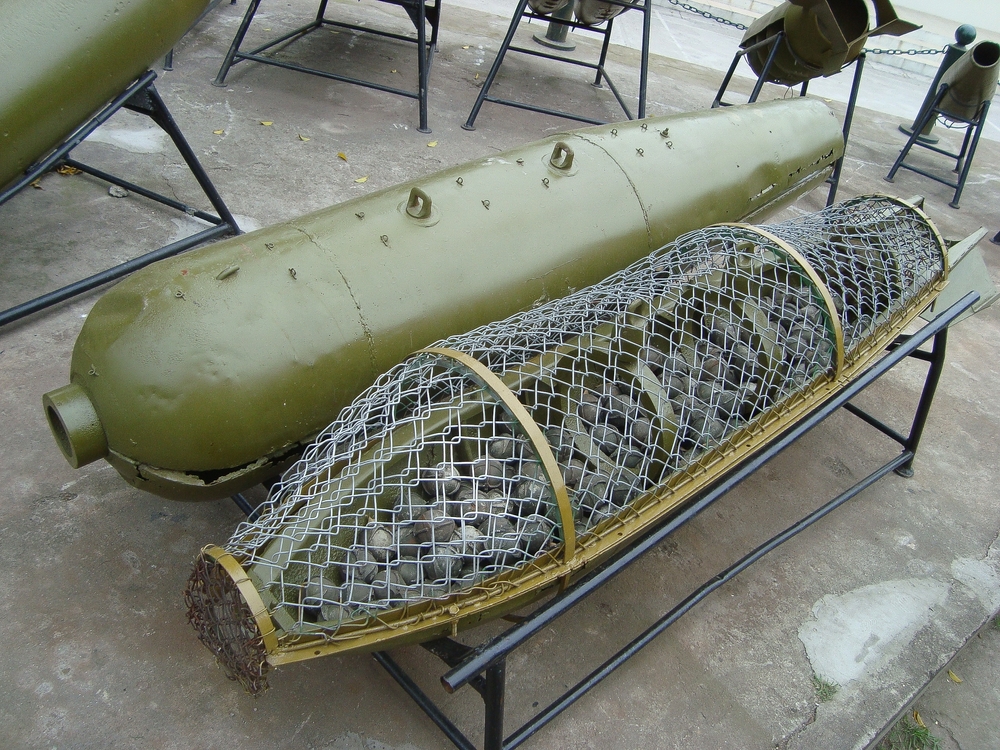A recent announcement by the White House stated that Ukraine will receive a new package of military aid, much of which will be cluster munitions. These bombs or missiles explode to release submunitions, called bomblets, that spread around the target area and subsequently explode. By doing so, the area affected by the munition is greatly increased, with the secondary explosions able to eliminate vehicles and personnel in a much larger radius when compared to conventional rounds.
However, the use of these weapons is banned by over 100 states across the world as part of The Convention of Cluster Munitions. While neither Ukraine nor the USA are part of this convention, the prospect of their use has garnered widespread condemnation from international communities. Here’s why.
What are cluster munitions?
The munitions the USA intends on supplying are Dual-Purpose Improved Conventional Munitions (DPICM), specifically rounds for 155mm howitzers. These shells are fired from artillery and fly in a high arc for up to 28 kilometers (17 miles) before descending, where their outer casing falls away and the rotation of the round flings bomblets over the target area. If all goes as intended, the bomblets detonate upon impact, making it almost impossible for enemies below to hide from the shells. It also improves damage to infrastructure like roads, runways, and power lines, making them a powerful weapon to wield even on modern battlefields.
An old US-made cluster bomb with the bomblets inside. Image Credit: Voyage View Media/Shutterstock.com
Why are they so controversial?
Despite their uses, cluster munitions are not banned due to their damage during the war, but rather their problematic post-war impacts. While many bomblets detonate when reaching the ground, many do not. Some of these are inert and will never explode, but others will later explode, particularly when disturbed by locals or mine-clearing crews. This can lead to indiscriminate civilian casualties once war has ended and humanitarian groups have campaigned for stopping their use.
According to the Cluster Munition Coalition, the “ICRC estimates that in Laos alone, 9 to 27 million unexploded submunitions remain, and some 11,000 people have been killed or injured, more than 30 percent of them children” as a result of American bombings during the Vietnam war. The sheer number of bomblets released by these munitions can lead to a dangerous landscape for many years after the conflict is over.
Russia has been using these regularly during its invasion of Ukraine, despite ethical concerns. Ukraine also used cluster munitions in 2014 during the Donbas war, and the Human Rights Watch group claims they have been used in the current war, though this is not confirmed.
The USA justified this transaction by saying that without this deal, Ukraine would be left without artillery shells – a vital currency in the attempted war of attrition by Russia – and that their cluster munitions are significantly safer than current ones fielded by Russian forces.
“First, Russia has been using cluster munitions indiscriminately since the start of this war in order to attack Ukraine,” said Colin Kahl, Under Secretary of Defense for Policy, at a press conference.
“By contrast, Ukraine is seeking DPICM rounds in order to defend its own sovereign territory.”
Source Link: What Are Cluster Munitions And Why Are They So Controversial?
